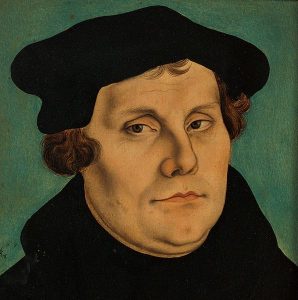Reform
Reform comes from the medieval Latin term reformatio and did not always have the same meaning as we understand it in the modern context. In today’s terminology, we think of reform in a legal context, however, its historical meaning, meant to rewrite the laws of a society. Based on this definition, one could potentially conclude that the intent of reformers during the Reformation was to alter laws within the Church. Reform can also be broken down into “re-form,” in which the “form” is something that does not change, and without that form nothing related to it could continue. In order to “re-form” something, it would be to return to that original form. According to this school of thought, to reform was to revert to a more pure form of Christianity. As early as the late thirteenth century, talks of “re-forming” the Church began.

Reform allowed people who had ideas about how to return the Church to a more pure version of itself to become reformers. A reformer does not have to be a leading thinker of an ideology, like a famous humanist or Martin Luther, though they are reformers, too. A reformer could be anyone who subscribed to the belief that the Catholic church needed serious changes in order to really exemplify God’s word. Luther was one of the main driving forces that brought groups of reform-minded people together, and gave them ideas to unify behind.
The reason for this movement was that many people both within the ranks of the Church and the average citizen believed that high level church officials became too engrossed in indulgences and in the accumulation of wealth and lost sight of the religiousness of their positions. An indulgence in this context is essentially when people would buy benefits that proved they were more religious or devout. The people included in this group were priests, bishops, and cardinals alike who focused more on obtaining land and fine clothing than spreading the word of God. Various councils formed over the span of hundreds of years to discuss this “re-form” of the Church back to its original purpose: to live a pious, minimalist, religiously-focused life.
Luther was a revolutionary reformer in the sense that he was one of the first vocal opponents to the Church who had gained wide appeal. His ideas allowed him to gain widespread popularity. One of the main reasons why Luther’s ideas were so widespread was due to the invention of the printing press. The introduction of this new technology allowed for reform to go from an idea to a movement.
To further explore ideas about the reformation, and reform in general, check out the following links:
http://www.ignatiusinsight.com/features2006/print2006/gstclair_reformation_feb06.html
http://www.biographyonline.net/people/famous/protestant-reformation.html
http://www.history.com/topics/reformation
http://www.ligonier.org/blog/reformation-and-men-behind-it/
Works Cited
Cameron, Euan. Ch. 3, “‘Reform’ from within and its Limits,” The European Reformation.